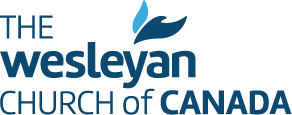Our History
History of The Wesleyan Church in Canada
Christians in the earliest days were marginalized and heavily persecuted by the Roman government (including the burning of believers at the stake), but empowered by the Holy Spirit and the loving, passionate, and holy lives of Christians, the church grew explosively in the first three centuries around Mediterranean seacoast, eventually becoming the dominant religion in the Roman Empire.
The church continued to flourish over the next 1500 years, but serious differences in doctrines and ministry practices arose, causing the church to divide into a variety of Christian denominations such as the: Roman Catholic Church, Eastern/Greek Orthodox Catholic Church, Coptic and Ethiopian Churches, Russian Orthodox church. The Protestant Reformation took place in the early
The ministry of John Wesley in the
Some believe Wesley’s reference in his Journals to an unusual and powerful encounter with the presence of God at a Moravian meeting on Fetter Street in January 1739 provided the spiritual unction which propelled his evangelistic and discipleship ministries forward. Historian Stephen Tomkins notes that after his Fetter Street experience, Wesley’s ministry was marked by “charismatic phenomena” and states, “once it began, this kind of thing (supernatural manifestations) happened almost daily”[iv]. It was in the months immediately after January 1739 that John began his field preaching; proclaimed ‘the world was his parish’ and thousands came to hear him share God’s good news; people were healed
As a student at Oxford University, Wesley and his friends were noted for being highly disciplined, strategic and methodical in their approach to life and service (thus the name “Methodist” became attached to his ministry). John’s ministry was characterized by the
The Methodist church movement found its way to North America in the late
The earliest known activities of the Methodist activities in Canada was the preaching of Laurence Coughlan who began to preach in, what eventually became known as, the Province of Newfoundland in 1766”[v], and more formally the establishing of places of worship around Chignecto, in northern Nova Scotia in the
The use of ‘circuit preaching’ in Canada is also well documented, such as: “in 1802, the Rev. Nathan Bangs was assigned to the Bay of Quinte Circuit, which covered the area from Kingston in the east, west to York, then north to Lake Simcoe, and back…”[viii] Through the ministries of various Methodist groups (i.e. Free Methodists, Nazarenes, etc.) the presence of Methodist churches slowly spread westward into the Prairie provinces.
As with many denominations, the Methodist church experienced several splits and mergers in both the United States and Canada. One notable split took place in 1843 when the northern Methodist churches, separated from the Methodist churches in the southern states over the issue of slavery. The Northern churches gave considerable money and assistance to the “Underground Railroad” from Illinois into Canada, aiding the estimated 20,000 “Freedmen” who had escaped slavery.[ix]On May 31,
The formal beginnings of the Wesleyan Methodist Connection in Canada can be dated in 1894, and the decision to create the first Canadian Conference (district) took place in 1897-8 at meetings in Winchester, Ontario, and ratified in 1899 at the General Conference in Sheridan, Indiana[x]. The name of the denomination changed from a ‘Connection’ of churches, to “The Wesleyan Methodist Church of America” on June 25, 1947, during the General Conference held in Houghton, New York.
The creation of our sister denominations were thankfully also taking place in the early part of the 18thcentury, such as the founding of the: Salvation Army; Brethren in Christ/Be in Christ; Free Methodist Church; Pentecostal churches; Christian and Missionary Alliance; Evangelical Missionary Church, Church of the Nazarene, and more recently the Vineyard church … all of which share a rich heritage, similar doctrinal positions, comparable church structures, complimentary church ministries, and warm relationships with the Wesleyan Church.
Many of these denominations sprang up as a result of revival movements which had a strong emphasis on holiness of heart and life. As one example, revival services spread through the Ottawa area between 1895 – 1900 under the ministries of Rev. Ralph C. Horner and others, which resulted in 118 places of worship, and many individuals called into pastoral ministry. Many of these holiness denominations launched global missionary and relief/development efforts (such as in India, Honduras
The Wesleyan Church of
Mergers with the Wesleyan Methodist denomination were taking place all during the 1900’s, such as (to name just a few): the Hephzibah Faith Missionary Society (1948), the Missionary Bands of the World (1958), the Reformed Baptist Alliance of Canada (1888-1966), the Pilgrim Holiness Church (1922-1968) and the Standard Church of America (1918-2004). These denominational
Together these denominations joined to become known as The Wesleyan Church in 1968. The Wesleyan
Wesleyan churches in Canada consider it a wonderful privilege to partner with other Christian denominations and parachurch organizations, especially our sister holiness churches in the great commission given by Jesus to His disciples over 2,000 years ago. We continue to be unwavering in our allegiance to the Bible, our reliance on the Holy Spirit, our commitment to serving our communities, and pursuing lives which are characterized by the power, purity
[i]Matthew 16:18
[ii]Matthew 29:19
[iii]Acts 1:8; 2:1-4; 4:31
[iv]Tomkins, Stephen. John Wesley: A Biography. Grand Rapids: Wm. B. Eerdmans Publishing, 2003 (pg. 65, 71)
[v]https://www.thecanadianencyclopedia.ca/en/article/methodism (accessed: Sept. 9, 2018)
[vi]https://en.wikipedia.org/wiki/Free_Methodist_Church_in_Canada (accessed: Sept. 9, 2018)
[vii]https://genealogyensemble.com/2014/11/25/the-loyalist-churches-of-sorel-three-rivers-saint-johns-chambly-and-surrounding-areas/ (accessed: Sept. 9, 2018)
[viii]https://krassoc.wordpress.com/ (accessed: Sept. 9, 2018)
[ix]Keilty, Henry. The History of the Wesleyan Methodist Church of America in Canada. 1894 – 1968. (pg. 15)
[x]Keilty, Henry. The History of the Wesleyan Methodist Church of America in Canada. 1894 – 1968. (pg. 10, 21)
[xi]http://www.oldhaybaychurch.ca/
[xii]Keilty, Henry. The History of the Wesleyan Methodist Church of America in Canada. 1894 – 1968. (pg. 18)
Prepared by Dr. Stephen Elliott (National Superintendent of The Wesleyan Church of Canada)
Sept. 2018; Updated April 2019
